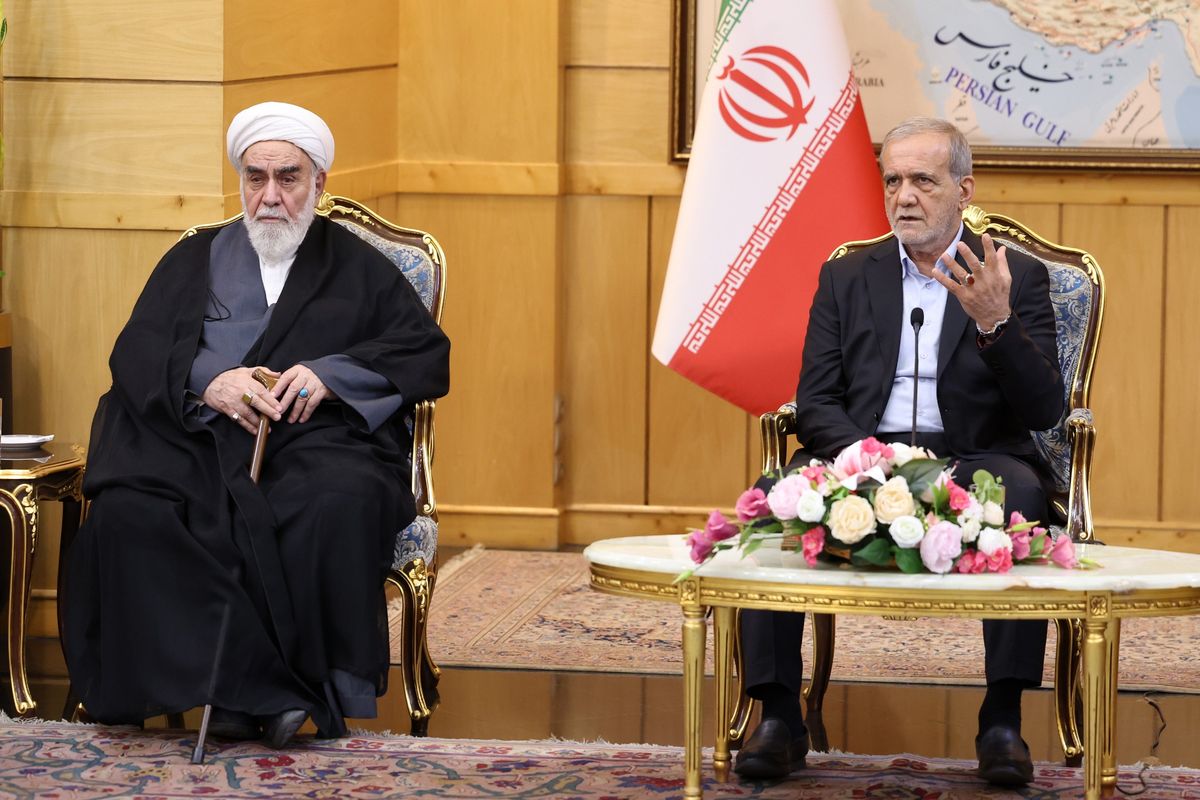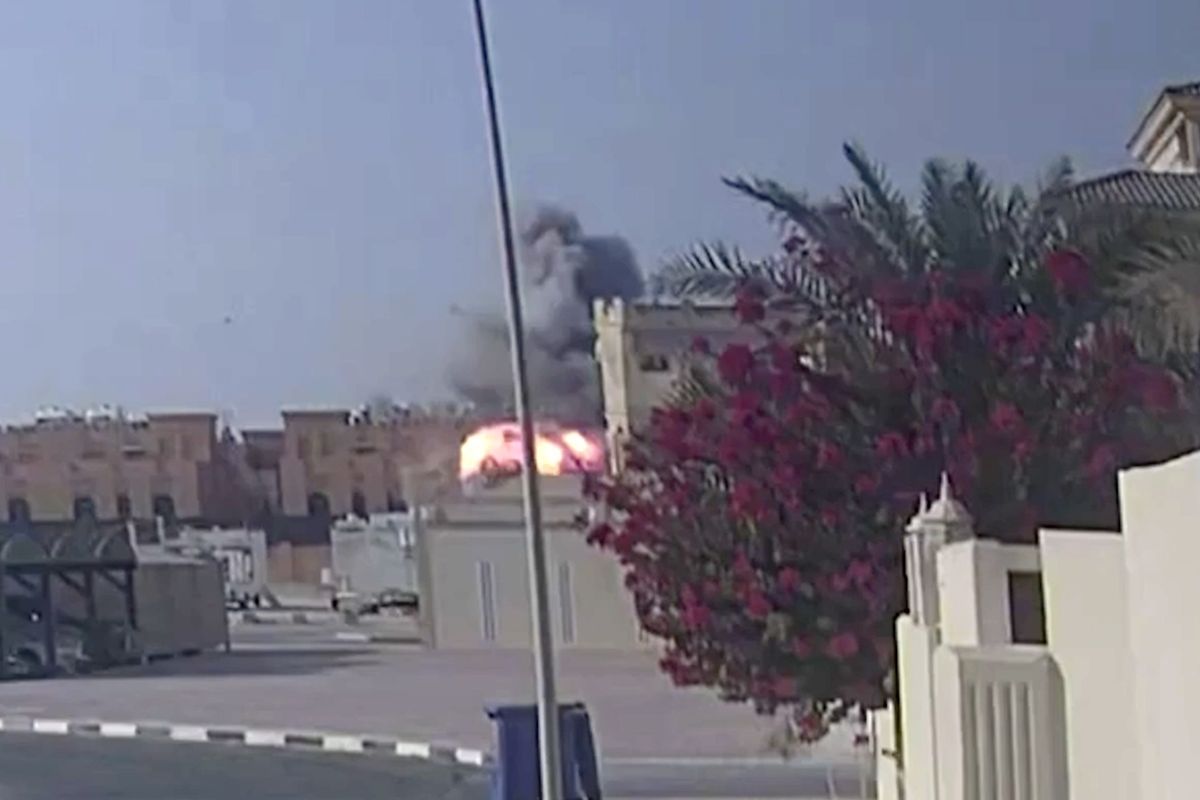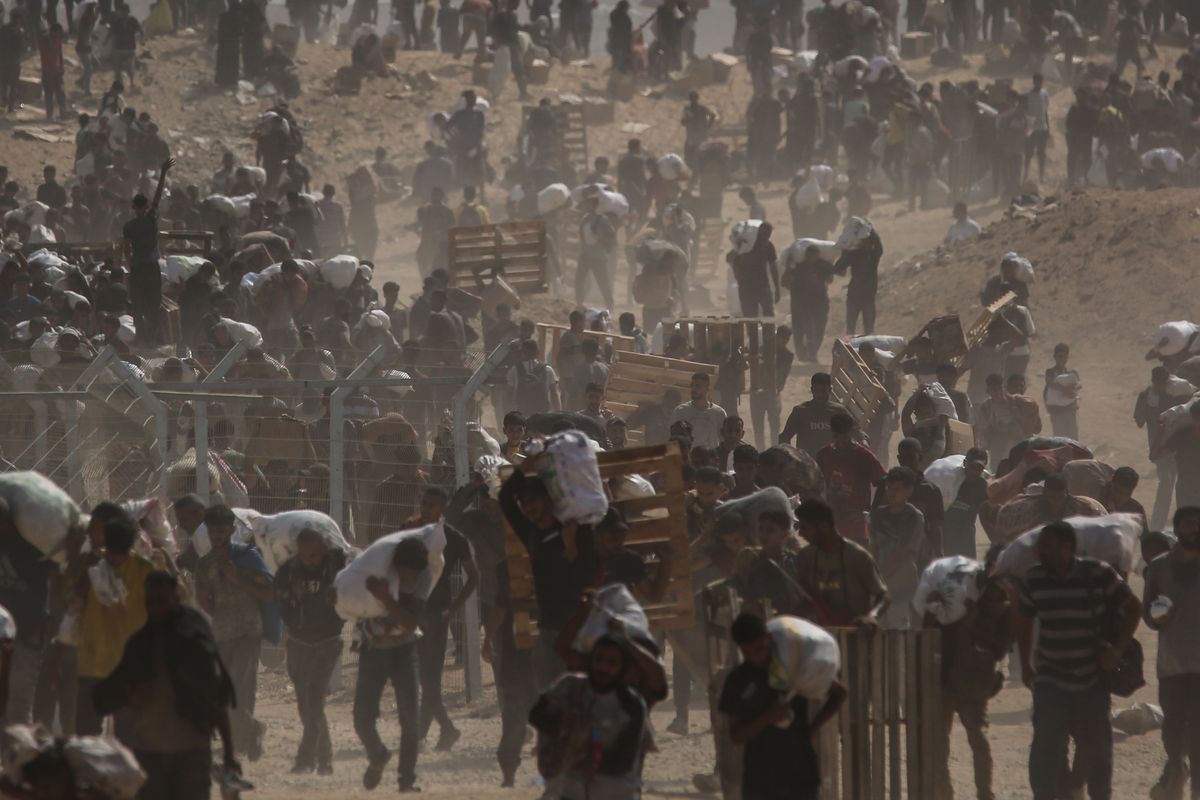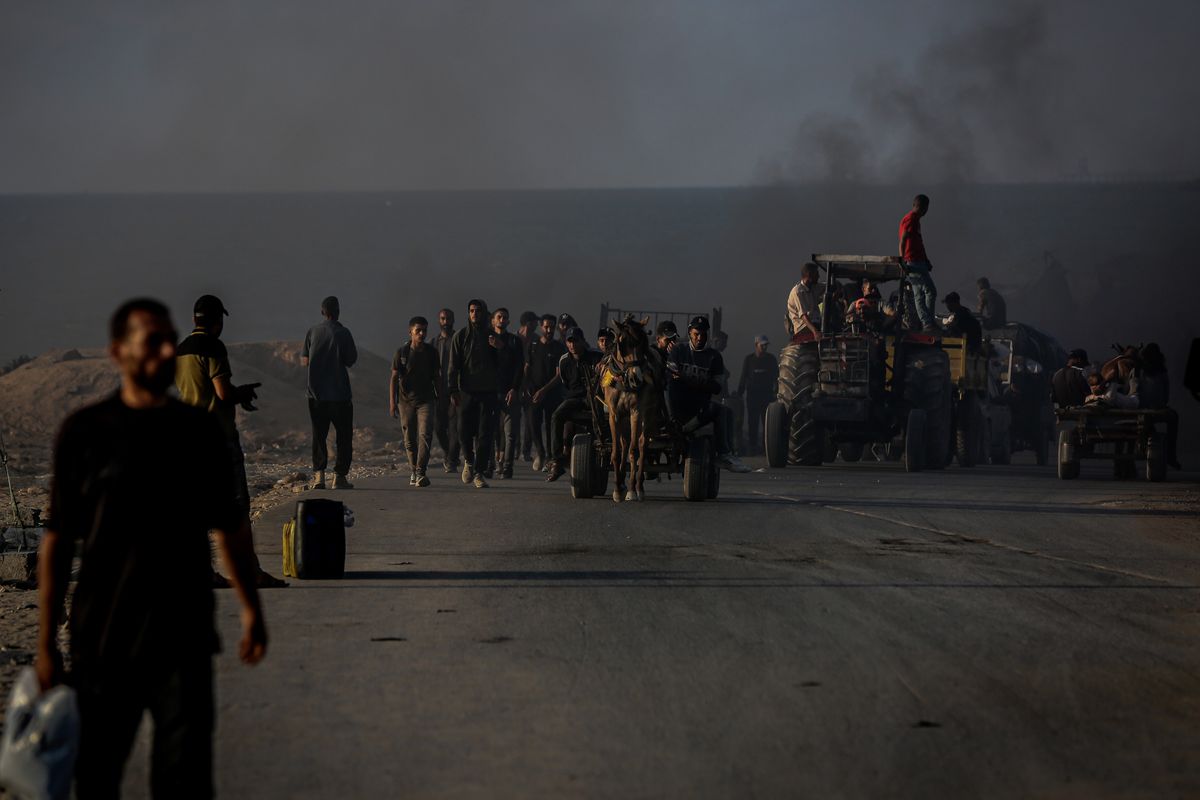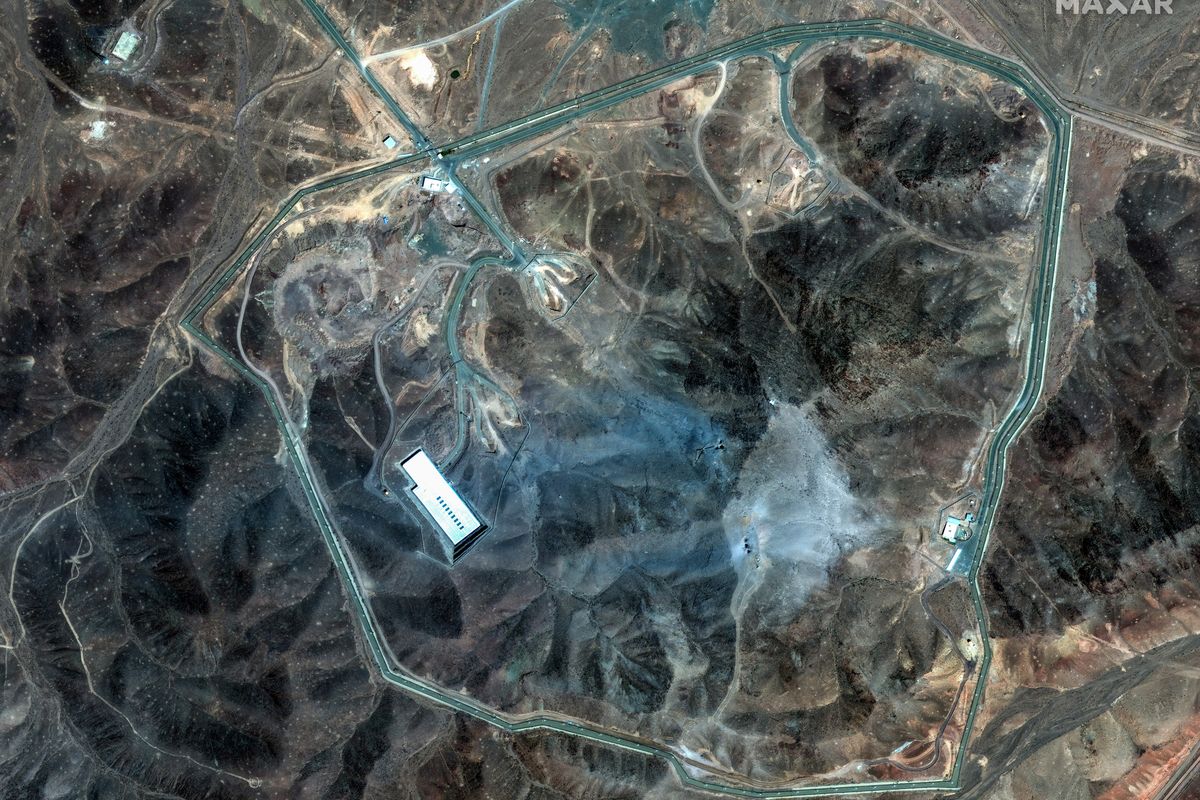SUBSCRIBER+EXCLUSIVE REPORTING — While hardly a match for the overwhelmingly cutting-edge and highly trained Israeli forces, Hamas’s competency on the battlefield lies not in weapons finesse or accuracy but in its ability to produce and procure a stockpile of improvised rockets, mortars, explosives, anti-tank guided missiles and shoulder-launched anti-aircraft missiles (MANPADS) cheaply, quickly and under its neighbor’s radar with a focus on quantity, not quality.
“In the first category, Hamas has a surplus of small arms and light weapons thanks to its own logistical efforts and, of course, Iran. All those cheap Norinco Type 56-1 automatic rifles are the same seized on boats sailing to Yemen,” said Miguel Miranda, founder of the Southeast Asian monitoring service, Arms Show Tracker. “There’s also an abundance of RPG-7s and their derivatives, such as the Chinese Type 69, thanks to Iran. Hamas propaganda has also shown they manufacture tandem warheads for their RPG-7s. These munitions are based on a Russian design and are meant to defeat contemporary tank armor.”
Much of the arsenal is believed to be comprised of short-range rockets named after the Hamas armed wing, the Qassams. These boast a range of roughly 6.2 miles but come with capricious flight paths – which include erroneously landing within its own soil.
In terms of medium-range weapons, Hamas is said to have rockets based on Russian and Iranian designs that can travel up to 25 miles – as far as Tel Aviv, as well as an assortment of Russian Grad projectiles with a twelve-mile trajectory.
Dig in on the cyber components of Israel’s war on Hamas during the Cyber Initiatives Group’s virtual Winter Summit, Wednesday, December 6 from 12p – 3p ET. Save my seat.
The longest-range rockets can extend further, potentially landing inside Jerusalem and Ben-Gurion Airport. These include the M-75, a local version of the Iranian 333 mm long-range multiple launch rocket system, the homemade R-160 that can supposedly carry a 130-pound warhead, and the J-80 – developed in 2014 with at least a 50-mile range. Israeli officials have claimed some rockets have landed as far as 75 miles from their launch point.
However, the number of rockets in Hamas’s possession varies wildly, with experts pegging the number at somewhere between five and twenty thousand. Hamas has also amassed scores of mortars and Russian-made, laser-guided anti-tank missiles termed the Kornet. This is known in the West under the NATO designation AT-14 Spriggan.
“A real cause for concern for the IDF is Hamas’ supply of anti-tank missiles,” Miguel stressed. “Oddly, they (Hamas) have shown some North Korean’ Bolsae’ anti-tank missiles in the past. But we know they also have the Russian-made Kornet missiles, which are ubiquitous in the region. The availability of ATGMs in Gaza and nearby cities in the strip is a real frustration for Israeli ground forces.”
In recent years, Hamas has also debuted a “Shahab” suicide drone, essentially a replica of the Iranian-made Abadil-2. Also referred to as a “loitering munition,” this weapons system can linger near a target and then detonate on impact.
Hamas operatives also retain a collection of guns, including modified Soviet-styled AK-47s, rocket-propelled grenades, long-range sniper rifles and heavy machine guns. Specifically, the outfit has the Iranian-made rifles, in particular the Sayyad, a wide-reaching .50 caliber firearm. Some reports also suggest that the militants have duplicates of Chinese machine guns.
In terms of tactics, Hamas has relied on boobytraps and suicide bombers and has even adopted the illicit tactic of donning IDF uniforms and moving in likely stolen Israeli military vehicles to create confusion.
It's not just for the President anymore. Cipher Brief Subscriber+Members have access to their own Open Source Daily Brief, keeping you up to date on global events impacting national security. It pays to be a Subscriber+Member.
It remains unclear exactly how many fighters, typically belonging to the Hamas militant wing the Izz ad-Din al-Qassam Brigades, are battle-ready. Estimates range from seven to fifty thousand. In addition, the Brigades operate a self-styled military academy complete with expert training in the realm of cybersecurity along with a naval commando unit.
Such a stockpile isn’t generated in a vacuum.
“We have locally manufactured rockets, but the long-range ones came from abroad, originating from Iran, Syria and other sources through Egypt,” Hamas leader Ismail Haniyeh told Al Jazeera’s Arabic service last year.
The machinery needed to make rockets and mortars, or even the whole weapon broken into parts for assembly, is smuggled into Gaza through the Egyptian border, often originating in Sudan and Libya, utilizing the extensive maze of deep, sophisticated tunnels extending from the Sinai Peninsula into Gaza. However, over the past decade, Egypt has cracked down on black market operations – prompting Hamas to cultivate its own weapons and explosive-making production facilities out of crude materials under the instruction of the Islamic Revolutionary Guard Corps (IRGC) and Hezbollah commanders.
“Instead of giving them a fish or teaching them to catch a fish, we taught our allies and friends how to make a hook, and they are now in possession of missile capabilities and technologies,” General Amir Ali Hajizadeh, the leader of the IRGC Aerospace Force, said in early 2021. “Today, the Palestinians fire rockets instead of throwing stones.”
Hamas often then uses civilian dwellings and infrastructure to conceal these weapons, adapting constantly to IDF monitoring and intelligence. While smuggling routes between Egypt and Gaza are still used, Hamas is believed to have become more adept at home-grown manufacturing – even repurposing rummaged plumbing pipes and parts gleaned from dud Israeli armaments.
By comparison, Israel has one of the biggest defense budgets on the planet per capita and a depot replete with a massive drone fleet, advanced missile boats, tanks and an Avant Garde air force composed of hundreds of F-35s and F-16s. Adding to its dominance, Israel has an estimated 170,000 active duty troops and a further 360,000 reservists on standby.
The IDF consistently ranks in the top twenty among the world’s most powerful militaries, as per the Global Firepower Index, a database that assesses factors such as troop numbers, weaponry, technology and financial resources.
The Israeli arsenal includes advanced missile boats, tanks, attack helicopters and a large drone fleet. But the IDF’s primary strength lies in its air force, primarily composed of cutting-edge American aircraft, including hundreds of F-16s and F-35s.
Most notably, Israel invented the Iron Dome missile defense system with a ninety percent incoming rocket interception success rate – although it is inefficient against Hamas’s short-range rockets, which have been used more intently throughout this latest war.
“Hamas does not have anything near the military capacity that Israel has. In force-on-force direct combat, Israeli forces would quickly destroy an opposing Hamas force because of its superior firepower,” surmised Karl Kaltenthaler, Director of the Center for Intelligence and Security Studies and a Political Science Professor at the University of Akron. “But Hamas is not planning to fight that kind of war. This will be a war of guerilla tactics by Hamas and possibly a prolonged insurgency in Gaza. They do not need massive firepower to accomplish that.”
From Kaltenthaler’s purview, the most critical factors in Hamas’s weapons cache buildup are the massive support they get from Iran and the smuggling of arms that Hamas procures from elsewhere.
“Without Iran’s help, Hamas would be a much weaker force than it is today,” he cautioned.
According to defense technologist and co-author of Hunting the Caliphate, co-authored by Wes J. Bryant, Hamas primarily utilizes older Chinese and Russian-model assault rifles, machine guns, and grenades in addition to their own rocket manufacturing capabilities used specifically to bombard Israel’s storied Iron Dome.
“The majority of fighters carry some variant of AK-47. All these weapons are the same as the weapons U.S. forces are using in all of our counterterrorism operations in the Middle East, and the supply channels are much the same. Most often adversary state-sponsored, Iran in this case,” he continued. “As well, there is just such a proliferation of Soviet-era weapons across the Middle East that there are a multitude of ways in which Hamas and parallel forces end up being supplied.”
Read more expert-driven national security insights, perspective and analysis in The Cipher Brief




